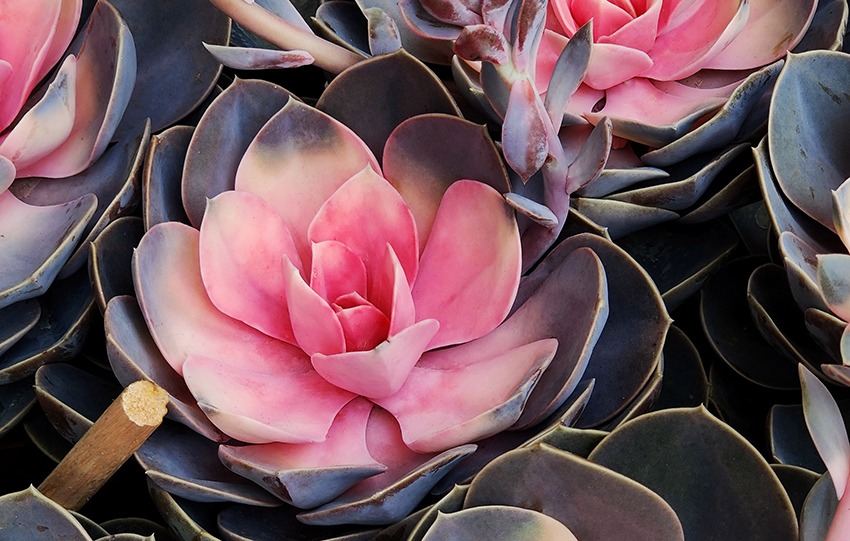Echeveria is a large genus of flowering plants in the family Crassulaceae, native to semi-desert areas of Central America, Mexico and northwestern South America.

Most plant enthusiasts are familiar with them as small, attractive rosettes that in time form the “hen & chick” clusters so well suited to window culture, and as container plants on the patio in singular or multiple plantings.
Few are aware of the potential of the larger Echeverias with regards to xeriscaping in relatively frost-free climates.
Care for echeveria is not complicated.
Echeverias prefer good air circulation, well draining soil, and will thrive in slightly cooler, temperate climates. Echeverias may become somewhat dormant in extreme heat, but begin growing again once the temperature cools in the fall. It is necessary to protect Echeverias from frost to prevent scarring of the plants.
Over the years, much hybridization has been done with Echeverias, to the extent that these plants now exist in nearly every color of the rainbow, and with many variable shapes. These striking plants, for the most part, are descendants of Echeveria gibbiflora, which has its natural habitat in forests at 2000 feet of altitude in Mexico. Some sport caruncles, or raised areas on the leaves, often blushed with a contrasting color, resembling volcanic lava erupting from a cinder cone.
Others have intricately ruffled or crinkly edges, with ever concentric patterns, exhibiting fascinating fractal design. Opalescent blue, blushed with fiery pink, dark coppery bronze, mahogany, lavender violet, powdery alabaster, and lime green with red tips are just a few of the possible color combinations. These beautiful rosettes can grow to impressive diameters of 15″ to over 20” when planted in the garden, and will provide dramatic color and shape accents for other xeriphytic plants.
James Lucas looks at different forms and discusses hybridization as well as giving us a look at his own collection.
World-renown succulent expert, Debra Lee Baldwin has superb information about echeverias on her website. CLICK HERE for more information.
